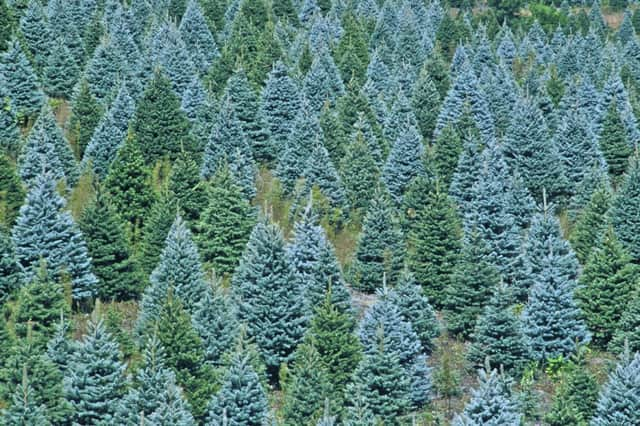Conservation is not landscaping


AT GLEN Quoich by Braemar in 1942 I first walked in Old Caledonian pinewood. Vividly do I recall the height and girth of the ancient trees, their rough reddish bark, their dark green needles.
In the Scots tongue we called them firs, not the English pines. Every tree was an individual – in size, shape and form. Dead standing pines rose, pale ghosts without bark.
Advertisement
Hide AdAdvertisement
Hide AdLichens covered dead lying pines. I saw no saplings, bar one where a seed had settled on an upturned stump, above deer mouths.
Above soared Beinn a’ Bhuird, snow patches gleaming in the sun. Ants scurried up and down trunks, returning with resin to put on an anthill. When I put my face close, they squirted burning liquid in defence of their city.
Turbulent ran the Water of Quoich amongst boulders, but a pine had blown across, so I crawled over dry-footed.
That day still excites me. Old Caledonian pinewoods are a rare treasure. People should respect them. Let us hand them to later generations in a better natural state than now.
By the 1950s I knew all the Old Caledonian woods and began studying them.
Counting rings revealed that many pines began life 200 years ago, and some veterans centuries before. Soon I saw that the Scottish Caledonian woods form part of the boreal forest of Eurasia and North America.
Our woods are unique, however, because they have adapted genetically to Scottish environments. They are of priceless value for landscape, wildlife and human recreation.
Britain ignored its responsibility for decades. When the Nature Conservancy designated the Cairngorms National Nature Reserve, a wise principle was natural evolution of environments with minimum human interference.
Advertisement
Hide AdAdvertisement
Hide AdThe minimum was understood to be reducing unnaturally many red deer, which prevented natural regeneration by eating young trees. Powerless sat the Nature Conservancy, for it did not own the land.
During 1959, HM Steven and A Carlisle in The Native Pinewoods of Scotland showed that the woods had continued for millennia since our last glaciers melted, by seeds from older pines.
They wrote, “To stand in them is to feel the past” and “The native pinewoods are one of the most important living historical monuments of Scotland”. However, most were in poor shape because deer or sheep ate almost all seedlings.
At Caledonian woods bought with taxpayers’ money by the Forestry Commission (FC), workers felled, fenced and planted, including alien American conifers. Several private owners used FC grants to fence, plough and plant underneath ancient pines, often with aliens.
These excesses have now ended. The FC at Glen More removed aliens. The Nature Conservancy’s successors, Nature Conservancy Council and Scottish Natural Heritage (SNH), cut deer stocks at Inshriach. Natural regeneration of pines followed.
The Royal Society for the Protection of Birds (RSPB) did this at Abernethy, as did owners at Glen Tanar, Glen Feshie and Mar Lodge.
Since 2011 there has been a turn for the worse. The RSPB have started planting at Abernethy. They and Trees for Life at Glen Affric request donations to “expand and restore Old Caledonian Forest”. One cannot expand or restore natural woodland by unnatural methods. The government’s statutory advisers SNH, the FC and Cairngorms National Park Authority approved Abernethy planting.
A common error is that Old Caledonian pinewoods should contain more broadleaved trees such as birch and aspen. The FC demand at least 15 per cent broad-leaved when grant-aiding planted pinewoods.
Advertisement
Hide AdAdvertisement
Hide AdThey should realise that broad-leaved trees are scarce in Caledonian pinewoods because the fertile soils that suit them are scarce. They should visit Scandinavia, where broad-leaved trees are absent on acidic bedrock or excessively drained sands.
Choosing seeds and nursery work involve selection that is unpredictable. Nursery plants are more nutritious from fertiliser and rich soil.
When transferred to poor soil they become tasty morsels for deer, which can find them from afar. Such planting wastes money.
In Caledonian pinewoods, planting is landscape gardening, not nature conservation. Why hurry to “deliver” precise “targets” and “visions”? This signifies arrogance that man knows best.
Why not wait, and admire what nature provides without a penny from donors and taxpayers?
Planting reduces naturalness. It precludes future options without planting. If owners then decide to return to natural regeneration, it will be too late. Those who plant or back planting will have squandered naturalness for ever.
It’s not too late for statutory guardians FC, SNH, CNPA to end this damage and go back to respect for nature.
• Dr Adam Watson is a scientist and outdoor writer, and adviser to Ramblers Scotland
SEE ALSO